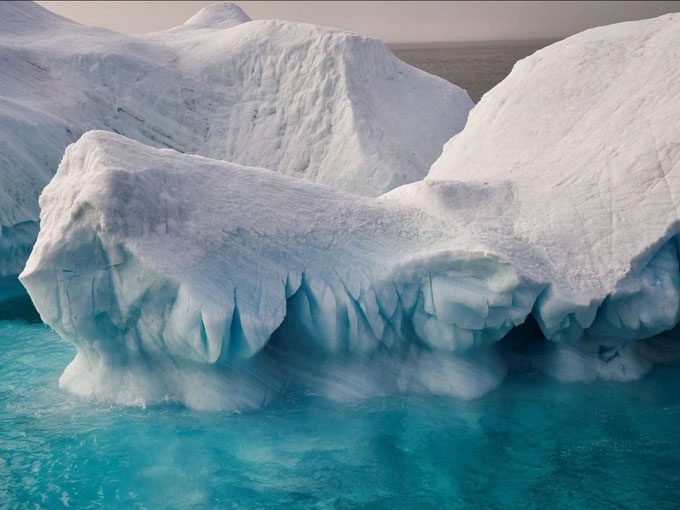The issue of global warming is causing ice in the Arctic to melt rapidly, leading to sea levels in Earth’s oceans potentially rising by 7 meters by the middle of this century.
Sea ice is formed from salty water on the surface of the ocean. The Arctic encompasses an ocean area of approximately 14 million km2, and for most of the year, it is covered by ice.
Ice in the Arctic is expected to completely disappear by the middle of this century, even under a low greenhouse gas emissions scenario, which will have severe consequences for the planet.
Too Late to “Save” Melting Ice

Global warming will cause Arctic ice to melt, leading to rising sea levels. (Photo: AFP).
The lead author of the study, Professor Seung-Ki Min from the Department of Environmental Science and Engineering at Pohang University of Science and Technology (South Korea), warns: “Regardless of the climate scenario being studied, the Arctic will lose sea ice even in the case of low greenhouse gas emissions.”
Dr. Heïdi Sevestre from the Arctic Assessment and Protection Program commented: “I have never seen such a comprehensive study on Earth’s climate. We will lose sea ice in the summer, that is certain, and the world is facing a climate disaster.”
Severe Consequences
The melting ice in the Arctic has severe consequences for our planet, with sea levels in Earth’s oceans potentially rising by up to 7 meters.
Seung-Ki Min explains: “The melting of sea ice will lead to higher temperatures in the Arctic. This warming issue will affect the permafrost and cause it to melt.”
Notably, melting permafrost releases a large amount of greenhouse gases into the atmosphere, further accelerating global warming. At the same time, this will also lead to the melting of the Greenland ice sheet (the second largest ice sheet in the world).
Ice acts like the planet’s air conditioning system, with its surface reflecting heat from the Sun back into space. Therefore, when ice melts, the oceans must absorb this heat.
“The consequences of ice melting will affect around 600 million people on Earth who live in areas 0 to 10 meters above sea level. Additionally, agricultural lands near the coast, residential areas along the ocean, and shipping ports will suffer severe impacts,” Heïdi Sevestre stated.
The study also reveals that the primary cause of melting ice is due to excessive fossil fuel use by humans on the planet over the past 40 years, which has emitted high levels of greenhouse gases.
“Humans cannot deny that we are the source of global warming. The world needs to take decisive action to save the planet and the survival of humanity. At this point, we will not have a victory in the war against climate change,” Heïdi Sevestre warned.
Point of No Return?
The point of no return means an issue will not be recoverable after it occurs, and the Arctic will have no ice unless Earth’s global temperatures decrease.
However, it is greenhouse gases (CO2: carbon dioxide) that alter the planet’s temperature, and Earth will not cool down, meaning ice cannot reappear in the Arctic.
Climate researcher Dirk Notz from the University of Hamburg (Germany) concludes: “This will be the first major component of Earth’s climate system that we lose due to greenhouse gas emissions.”
Scientists have been warning about this disappearance for decades, and sadly, their warnings have not been heeded.
The final hope lies with policymakers worldwide to heed the conclusions of researchers so that we can protect other components of our climate system and limit warming in the future.
The new study was published on June 6 in the journal Nature Communications.



















































